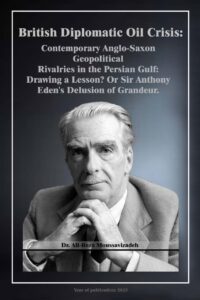The British Imperial Establishment, Post Imperial Era, and the ‘Churchillian’ World View, 1945-2016. (Adjustments & Challenges in Contemporary British Diplomatic Strategy)
187
APPENDIX
Brief studies of the
leading personalities
of the British Political Elite 1945-63 involved
with decolonisation policy (and
its wider implications)
1. Labour Parts
Attlee. Clement R. Prime Minister 1945-51.
Clement
Attlee entered legal chambers after Oxford University, but in
1905 became involved in the Haileybury
boys’ club in Stepney. In 1907 he
became its resident manager. Toynbee Hall Settlement was another
institution
where Attlee served for a time as a secretary. Attlee’s years in the East End of
London
changed him to a socialist. He joined the Fabian Society in 1907,
however he thought it was too middle class
in terms of attitudes. By 1908 he was
a member of the Stepney branch of the Independent Labour Party, and
after a
time became its secretary. In 1922 Attlee was elected as a Labour M.P. for
Limehouse. In Ramsay
Macdonald’s first Government in 1923-24 he became
Under-Secretary for War. His appointment as Labour
member of the Simon
Commission to India provided him with the self-confidence required for his
Indian
initiative twenty years later.
Attlee
proved an efficient Leader of the Opposition, between 1935-1940.
He held the Party together. In 1945 having
served in the War Cabinet, he
eventually became the firm and decisive Chairman of a Cabinet that
carried
through a social revolution without violence or repression. From the
nationalisation of
hospitals to recognition of Communist China, Attlee
instinctively belonged to the radical camp. He held
together an extraordinary
team of powerful personalities, as well as his party and the Labour
movement,
Pages: 1 2 3 4 5 6 7 8 9 10 11 12 13 14 15 16 17 18 19 20 21 22 23 24 25 26 27 28 29 30 31 32 33 34 35 36 37 38 39 40 41 42 43 44 45 46 47 48 49 50 51 52 53 54 55 56 57 58 59 60 61 62 63 64 65 66 67 68 69 70 71 72 73 74 75 76 77 78 79 80 81 82 83 84 85 86 87 88 89 90 91 92 93 94 95 96 97 98 99 100 101 102 103 104 105 106 107 108 109 110 111 112 113 114 115 116 117 118 119 120 121 122 123 124 125 126 127 128 129 130 131 132 133 134 135 136 137 138 139 140 141 142 143 144 145 146 147 148 149 150 151 152 153 154 155 156 157 158 159 160 161 162 163 164 165 166 167 168 169 170 171 172 173 174 175 176 177 178 179 180 181 182 183 184 185 186 187 188 189 190 191 192 193 194 195 196 197 198 199 200 201 202 203 204 205 206 207 208 209 210 211 212 213

